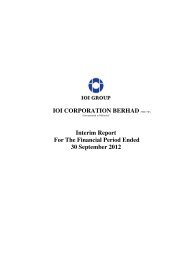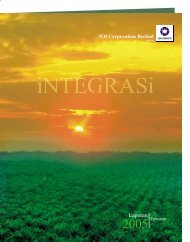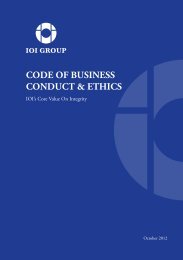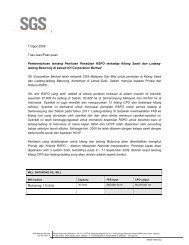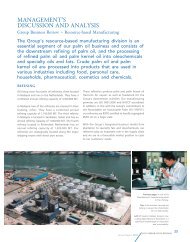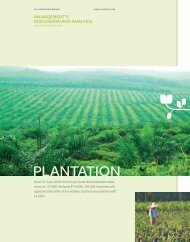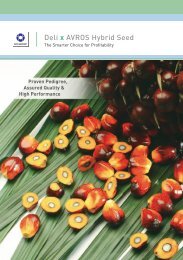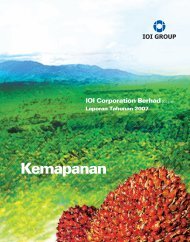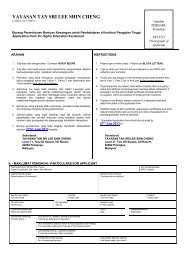Eng - IOI Group
Eng - IOI Group
Eng - IOI Group
Create successful ePaper yourself
Turn your PDF publications into a flip-book with our unique Google optimized e-Paper software.
Notes To The Financial Statements cont’d4. SIGNIFICANT ACCOUNTING ESTIMATES AND JUDGEMENTS4.1 Key sources of estimation uncertaintyThe key assumptions concerning the future and other key sources of estimation uncertainty at the balance sheet date that havea significant risk of causing a material adjustment to the carrying amounts of assets and liabilities within the next financialyear are discussed below:4.1.1 Impairment of goodwillThe <strong>Group</strong> determines whether goodwill is impaired at least on an annual basis. This requires an estimation of the valuein-useof the Cash-generating Units (“CGUs”) to which goodwill is allocated. Estimating a value-in-use amount requiresmanagement to make an estimate of the expected future cash flows from the CGU and also to choose a suitable discount ratein order to calculate the present value of those cash flows. The carrying amount of goodwill as at the balance sheet date isdisclosed in Note 19.4.1.2 Property developmentThe <strong>Group</strong> recognises property development revenue and expenses in the income statements by using the “stage of completion”method. The stage of completion is determined by the proportion of property development costs incurred for work performedup to the balance sheet date over the estimated total contract costs.Significant judgements are required in determining the stage of completion, the extent of the property development costsincurred, the estimated total property development revenue and costs, as well as the recoverability of the development projects.In making the judgements, the <strong>Group</strong> evaluates based on past experience and by relying on the work of specialists.A 10% difference in the estimated total development revenue or results would result in approximately 1% variance in the<strong>Group</strong>’s revenue and 2% variance in the <strong>Group</strong>’s results.4.1.3 Deferred tax assetsDeferred tax assets are recognised for all unused tax losses and unabsorbed capital allowances to the extent that it is probablethat taxable profit will be available against which the unabsorbed tax losses and the capital allowances can be utilised.Significant management judgement is required to determine the amount of deferred tax assets that can be recognised, basedupon the likely timing and level of future taxable profits together with future tax planning strategies.4.2 Critical judgements made in applying accounting policies4.2.1 Classification between investment properties and property, plant and equipmentThe <strong>Group</strong> has developed certain criteria based on FRS 140 in making judgement whether a property qualifies as aninvestment property. Investment property is a property held for capital appreciation or to earn rentals or for both. Someproperties comprise a portion that is held to earn rentals or for capital appreciation and another portion that is held for usein the production or supply of goods or services or for administrative purposes. If these portions could be sold separately (orleased out separately under a finance lease), the <strong>Group</strong> would account for the portions separately. If the portions could notbe sold separately, the property is an investment property only if an insignificant portion is held for use in the production orsupply of goods or services or for administrative purposes. Judgement is made on an individual property basis to determinewhether ancillary services are so significant that a property does not qualify as investment property.145ANNUAL REPORT 2007<strong>IOI</strong> Corporation Berhad



